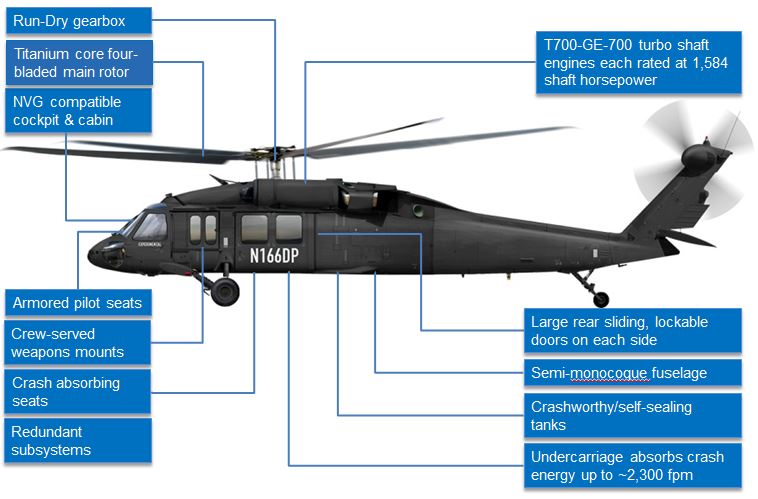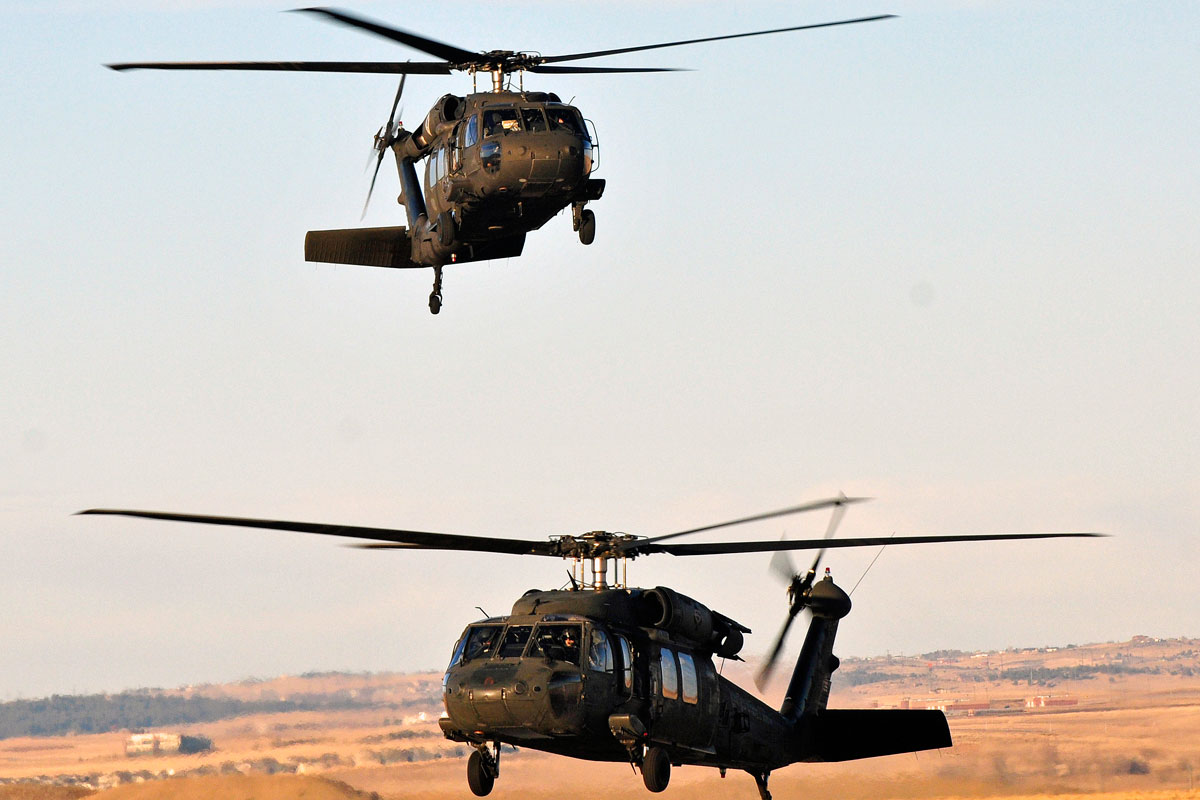Comprehending the Mechanics and Engineering Behind Uh 60 Helicopters
The UH-60 helicopter, typically referred to as the Black Hawk, stands as a pinnacle of contemporary rotorcraft innovation, symbolizing a mix of robust design and intricate technicians. From its inception to its present models, the evolution of this airplane showcases a blend of development and usefulness. As we peel off back the layers of the UH-60's design, a globe of detailed systems and careful design comes to light. Recognizing the mechanics and design behind this versatile aircraft unveils a world where precision meets power, and where each element plays a vital role in accomplishing trip.
Background of UH-60 Helicopters
The background of UH-60 helicopters traces back to the late 1970s when the USA Army sought a innovative and flexible utility helicopter to change its aging fleet. In action to this requirement, the Sikorsky Aircraft Firm established the UH-60 Black Hawk helicopter. Introduced in 1979, the UH-60 quickly came to be a staple in armed forces operations as a result of its impressive capacities.
The UH-60 was made to stand out in a variety of missions, consisting of army transport, clinical emptying, electronic warfare, and special procedures. Its capacity to adjust to different functions made it an important property to the united state Military and other military pressures worldwide
For many years, the UH-60 platform has undergone several upgrades and variations to enhance its efficiency and keep pace with advancing objective demands. These helicopters have seen comprehensive solution in problems such as the Gulf Battle, Afghanistan, and Iraq, showcasing their dependability and flexibility in diverse functional environments. The UH-60's abundant background is a testament to its long-lasting heritage as a premier energy helicopter.

Engine and Power Systems
Utilizing cutting-edge propulsion technology, UH-60 helicopters are geared up with innovative engine and power systems to make certain optimum performance and reliability in a series of functional situations. The UH-60, typically known as the Black Hawk, is powered by two General Electric T700-GE-701D engines, each qualified of providing up to 1,940 shaft horsepower. These turboshaft engines give the needed thrust for the helicopter to lug out its goals successfully, including army transportation, medical discharge, and battle support.

Rotor System and The Rules Of Aerodynamics
How do the blades system and aerodynamics of UH-60 helicopters contribute to their functional performance and flight capacities? The rotor system of the UH-60 helicopter plays an essential function in providing lift and propulsion. The UH-60 features a four-bladed, fully verbalized rotor system that enables high maneuverability and stability during flight. This layout makes it possible for the helicopter her latest blog to execute a vast variety of objectives, from transportation and medical evacuation to fight operations.
Aerodynamics additionally play a crucial role in the efficiency of UH-60 helicopters. The streamlined fuselage and blades blade style decrease drag, permitting the helicopter to accomplish higher rates and better fuel performance. The aerodynamic design of the UH-60 additionally contributes to its ability to run in diverse environmental problems, including high elevations and hot temperature levels.
Avionics and Flight Control Solution

In its elaborate control with the blades system and the rules of aerodynamics of UH-60 helicopters, the avionics and trip control systems develop an important network of technologies shaping the airplane's operational capacities. In the UH-60, these systems include digital screens, interaction radios, GPS navigation, climate radar, and auto-pilot systems.
The flight control systems of the UH-60 are in charge of converting the pilot's inputs into the proper adjustments to the rotor system, making certain stable trip and maneuverability. These systems include hydraulic actuators, servos, and computers that collaborate to control the tail and main blades, along with various other flight control surface areas. By exactly taking care of official statement the helicopter's trip characteristics, these systems make it possible for pilots to execute a variety of goals, from transportation and search-and-rescue to battle procedures, with accuracy and self-confidence.
Function and Applications in Aviation
The role and applications of avionics and flight control systems in aviation are integral to ensuring the secure and reliable operation of aircraft, consisting of UH-60 helicopters. Avionics systems in UH-60 helicopters incorporate an array of digital systems that aid in navigation, communication, tracking, and managing different aircraft functions. These systems include digital displays, autopilot systems, communication radios, GPS navigating devices, and weather condition radar. Flight control systems play a critical duty in steering the helicopter airborne, keeping security, and making sure exact motions. The fly-by-wire innovation utilized in contemporary UH-60 helicopters converts pilot inputs right into digital signals, which are then translated by the trip control computer systems to readjust the airplane's control surfaces. Furthermore, these systems integrate safety and security features such as auto-pilot modes, surface recognition alerting systems, and stability enhancement systems to improve the overall safety and functional capacities of the UH-60 helicopters in different goals, consisting of troop transportation, clinical evacuation, search and rescue, and airborne firefighting.
Verdict
In final thought, the UH-60 helicopter is a flexible aircraft with an abundant history and progressed engineering. Its engine and power systems, blades system, aerodynamics, avionics, and trip control systems all interact to make it a trusted and effective equipment. The UH-60's duty and applications in aeronautics are huge, varying from army operations to look and rescue objectives. Its continued advancement and use demonstrate its importance in the field of air travel (uh 60).
In its intricate coordination with the blades system and the rules of aerodynamics of UH-60 helicopters, the avionics and trip control systems form an essential network of technologies shaping the airplane's functional capabilities.The flight control systems of the UH-60 are liable for equating the pilot's inputs into the appropriate adjustments to the blades system, guaranteeing secure flight and ability to move. Avionics systems in UH-60 helicopters incorporate an array Check This Out of electronic systems that help in navigation, interaction, monitoring, and managing different airplane features. Furthermore, these systems incorporate security attributes such as autopilot modes, surface awareness advising systems, and security augmentation systems to boost the total safety and security and operational abilities of the UH-60 helicopters in different goals, including troop transport, medical discharge, search and rescue, and airborne firefighting.
Its engine and power systems, blades system, aerodynamics, avionics, and trip control systems all work with each other to make it a reliable and reputable device.